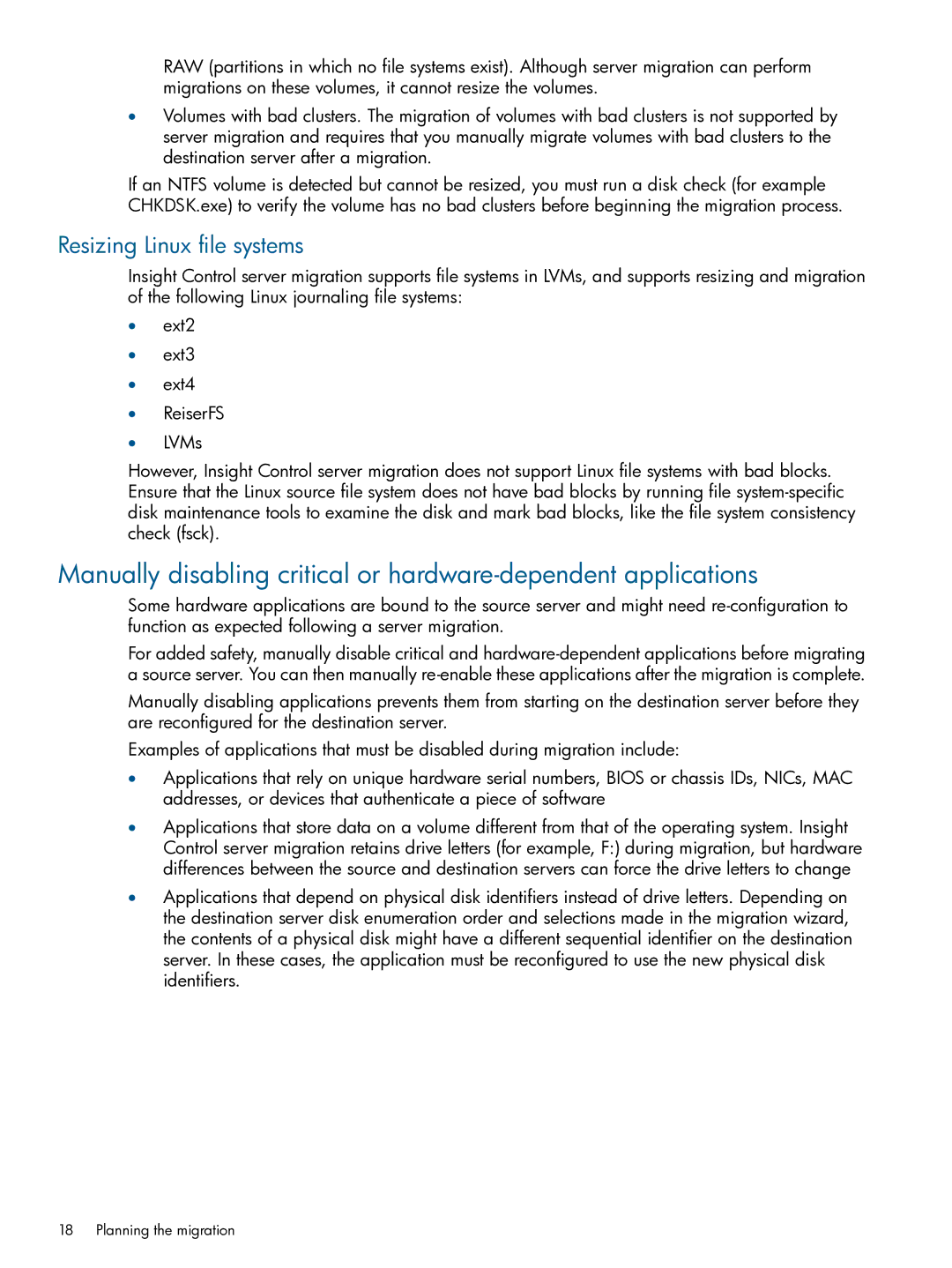RAW (partitions in which no file systems exist). Although server migration can perform migrations on these volumes, it cannot resize the volumes.
•Volumes with bad clusters. The migration of volumes with bad clusters is not supported by server migration and requires that you manually migrate volumes with bad clusters to the destination server after a migration.
If an NTFS volume is detected but cannot be resized, you must run a disk check (for example CHKDSK.exe) to verify the volume has no bad clusters before beginning the migration process.
Resizing Linux file systems
Insight Control server migration supports file systems in LVMs, and supports resizing and migration of the following Linux journaling file systems:
•ext2
•ext3
•ext4
•ReiserFS
•LVMs
However, Insight Control server migration does not support Linux file systems with bad blocks. Ensure that the Linux source file system does not have bad blocks by running file
Manually disabling critical or
Some hardware applications are bound to the source server and might need
For added safety, manually disable critical and
Manually disabling applications prevents them from starting on the destination server before they are reconfigured for the destination server.
Examples of applications that must be disabled during migration include:
•Applications that rely on unique hardware serial numbers, BIOS or chassis IDs, NICs, MAC addresses, or devices that authenticate a piece of software
•Applications that store data on a volume different from that of the operating system. Insight Control server migration retains drive letters (for example, F:) during migration, but hardware differences between the source and destination servers can force the drive letters to change
•Applications that depend on physical disk identifiers instead of drive letters. Depending on the destination server disk enumeration order and selections made in the migration wizard, the contents of a physical disk might have a different sequential identifier on the destination server. In these cases, the application must be reconfigured to use the new physical disk identifiers.
18 Planning the migration
